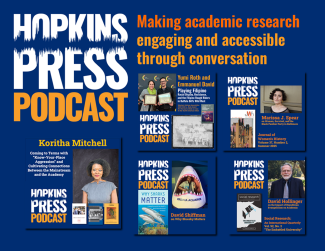
Read on for an informative, sometimes surprising Q&A with
Donald B. Kraybill, Karen M. Johnson-Weiner, and
Steven M. Nolt, authors of
The Amish, the definitive portrayal of the Amish in America in the twenty-first century.
Q: Why did you write this book?
A: Mainstream Americans are fascinated by the Amish—and so are we. But despite the rise of Amish-themed tourism, television shows, and romance novels, there is surprisingly little authoritative information available about them. Although there are books about the Amish in specific locations or particular practices, there was no book that provided a comprehensive picture of the enormous diversity of Amish life. There are more than forty types of Amish in 460 communities across North America. We’ve spent more than a quarter century getting to know these people, and wanted to share the remarkable diversity and resilience we’ve found.
Q: What do you think would most surprise the average American about Amish life/culture?
A: Their friendliness and humor when you learn to know them. How satisfied they are even without the latest household conveniences and online technology. Also, people would be surprised by their creativity and inventiveness when it comes to technology. They’re not dour folks left over from the 19
th century.
Q: Is the Amish population shrinking?
A: No, the Amish are growing rapidly. Their population doubles about every 20 years, and today they number more than 275,000. So they are thriving even in the midst of a hypermodern, high-tech society.
Q: What exactly is Rumspringa?
A: Rumspringa is the time when Amish youth can “run around” and socialize with their peers away from the watchful eyes of parents. This typically occurs between the age of sixteen and when they marry, which is usually around 20-22 years of age. Rumspringa is a time to find a spouse and to decide if they want to join the Amish church and make a lifetime commitment to it. During this time youth live at home, but on weekends hang out with their friends. Most of them are not yet baptized church members, so they are not yet accountable to the rules of the church. In some communities rowdy groups engage in “worldly activities” which may include driving cars, using alcohol, and participating in the nightlife of public entertainment. In other communities these activities rarely happen during Rumspringa.
Q: Why do you think the Amish have become the darlings of Reality TV?
A: For starters, the Amish are interesting because they appear so different from the rest of us. Outsiders have trouble imagining that anyone would be satisfied living without a car, a smart phone, or a high school education. So Amish-themed reality TV sets up lives that are radically different and “Amish” characters who then rebel against Amish ways of life, smashing our stereotypes of quiet, reclusive, rural pacifists.
Q: What do you hope readers will take away from reading The Amish?
A: The fact that Amish society has enormous diversity and complexity and is not simple or simplistic. The Amish are a robust and ingenious American group that has creatively developed ways to negotiate with the outside world to both maintain their traditions and tap many benefits of modern life.
Interested in learning more? Take a look at The Amish and Technology and From Rumspringa to Marriage, chapter excerpts from The Amish that explore two of the most fascinating aspects of Amish culture.



